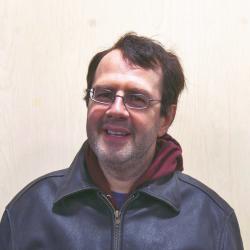As Lucas has mentioned, the TOEFL loves animals. Indeed, many sections of the TOEFL include an animal-related reading or lecture. I’ve also found that the TOEFL loves all life science. Even TOEFL readings on other topics may mention life science in some way. For example, a history reading in Official TOEFL iBT Tests mentions the way farming was started in the Pacific Islands. And in The Official Guide to the TOEFL Test, there is a chemistry reading about icebergs that talks about ocean life. In fact, just in the Reading Sections of these two books alone, 16 of the 24 readings at least partly talk about life science.
Lucas has already taught you six animal words: population, habitat, migrate, thrive, predator, and prey. In today’s post, I will help you build on that vocabulary with six more words about the life sciences.
Organism/organic
These two words are closely related, so I will teach them together. “Organism” is a noun means any living thing. A mushroom, a tree, a dog, and even a germ are all organisms. “Organic” is an adjective. It means related to living things. Wood is an organic building material, for example. Metal is not organic, because it doesn’t come from a living thing.
Example: Phytoplankton is a single-celled organism that is the fundamental component of plankton, a common organic food in many marine ecosystems.
Species
A species is a group of animals, plants, or other living things that are very similar. Members of a species reproduce to make new members of the same species. You belong to the human species. Chimpanzees look like humans in many ways, but are a different species, because they cannot make human babies. Oak trees and elm trees are different species. Oak tree seeds will only grow into oak trees, and elm tree seeds will only become elm trees.
Example: There are reportedly more than 440 species of shark in the world.
Vegetation
“Vegetation” refers to any kind of plant. It is related to a word you may know: vegetable (foods like carrots, lettuce, potatoes, etc…). The difference between “vegetation” and “vegetable” is that not all vegetation can be eaten. You wouldn’t eat a tree, for example. And of course, some plants are poisonous.
Example: The biologists observed the eating habits of many nearby species for more than a year. They determined that no two species ate the same part of the local vegetation.
Microscopic
“Microscopic” is the one other adjective in this post. (The other one being “organic” at the beginning of this list.) “Microscopic” means too small to be seen by the human eye. This word can refer to anything that is too small to be seen, whether it is organic or not. However, on the TOEFL and in academic writing, “microscopic” often refers to tiny, single-celled organisms.
Example: There are about 1000 species of microscopic organism that live on human skin.
Invertebrate
An invertebrate is an animal with no bones in its body. Common invertebrates include the earthworm, the spider, and the octopus. (The opposite word of this is “vertebrate,” meaning an animal that has bones.)
Example: The majority of earth’s animals—up to 97% by one estimate—are invertebrates.





